
It wasn’t that long ago that merely bringing up the word, survivalist, would get you awkward glances from most people within earshot -of that ridiculous word. Even at social gatherings, I would have family members and friends poke fun at me whenever anything resembling the word preparedness was uttered. I would smile and laugh along with them, knowing that it was all done in good fun. But as the years passed, many of these same people, that were full jokes, are now taking their emergency preparedness training seriously. I’m quite sure of this because I’m generally the first person that they seek out when they make their decision to get started. One of the most important things I stress is the importance of physical training and with that, the need to restore your body afterwards.
Restore Your Body After Spending Time In The Field
I must admit that I’m proud of the preparedness community on a whole. We never veered under pressure and kept our focus as we continued on with the mission. Many newcomers have joined the ranks which greatly adds to the readily available information. There are more websites, gear reviews, blogs, equipment, courses and classes than ever before. I realize that on the contrary, there is also a lot more garbage that we need to sift through. In addition, we need to make sure that the information that we are gathering is coming from a credible source.
When it comes to buying gear, I see many in the preparedness community shell out small fortunes on equipment. They want what is best for themselves as well as their loved ones. The tides have also changed and the gear is not only being bought and staged, but it is finally getting used! Still… There are still those that are satisfied by just being gear collectors with zero practice application. Luckily, the majority of the community is realizing that without investing time in proper training with their new gear, they are just glorified gear collectors; With a false sense of security.
The preparedness community has certainly stepped up their gear lists and skill sets. However, there is a main piece of gear, I would say the most crucial one, that continually gets neglected by those focused on survival. That item would be…
Their Bodies!
Physical preparedness seems to take a backseat to nearly every other aspect of getting prepared. Unfortunately, without health and the ability to move efficiently… All other skill sets, for the most part, are rendered useless.
There are various aspects to being physically prepared for when the SHTF. To keep it simple, you need to have strength and you need to have endurance. When it comes to strength, think of the ability to put on your fully packed go bag and be able to comfortably move around with it. When it comes to endurance, think of the ability to travel far distances with that heavy backpack. There is a third part to being physically prepared and that is the ability to restore the body.
Even if you are not on a current protocol to enhance your strength and endurance, being able to restore your body is still a crucial aspect of your preparedness. We basically put our bodies out of whack on a daily basis. We sit for long periods of time and have basically become chair shaped over the years. Our spinal alignment is off and our core has become much weaker than it was designed to be. When you add in weekly hikes, sporting activities or even playing with children… Restoring the body needs to be an area of focus.
When I reference restoring the body, I want your to picture a car, any car, for this example. When we drive around we hit bumps, pot holes, rocks and who knows what else. This begins to shift crucial components of that car, into areas that they do not belong in. To remedy the situation, we bring our car to the auto mechanic. They align the wheels, as well as other components, and put them back into the locations that they intended to reside. Think of the wheel alignment on your car as an analogy for restoring your body.
There are various methods, both old and new, used to restore the body. Yoga is quite popular and rightfully so. It has helped to restore the body for thousands of years, so we know that it works. There are also various forms of joint mobility. That is where you move your joints in all planes of motion in order to restore connective tissue. This also helps to alleviate toxins from, and bring nutrition into, the connective tissue. Some use active stretching in order to aid them in realigning the body. Whatever your preference may be, the key here is to stick with it and restore on a daily basis.
I want to share a few of the reasons why I feel that you should take time to restore your body.
Let’s get started:
Put Your Body Back Together:
When we are out in the field, there are countless tasks to perform. The adventure may start by hiking out with a heavy backpack for a few miles. That task alone requires some serious restoration… But that is only the beginning. We are now at basecamp and we need to setup our shelters. Then there are the general tasks such as:
- Setup Tarps
- Gather Firewood
- Setup Campfire Ring
- Cutting Wood Safe Area/Set Up Axe
- Setup Latrine
- Build Fire
- Setup Cook Stations
- Setup Mess Area
- Cook
- Dining Area
- Cleanup
Just think… That’s a hell of a lot of work and you haven’t even gotten to your mission!
All of these tasks require you moving in multiple directions and at times, awkwardly. It’s as if parts of your body have been ripped off and attached in other places.
Restoration is key to get your body put back together. Utilizing a sequence of movements will help to get the body functioning as one machine, as opposed to a bunch of individual parts.
Body Alignment:
As we move in the field, we need to be aware of how our body is aligned. If you arch your back, this could lead to injury. If you round your back, this can also lead to injury. It is important to keep your body aligned and a big part of that is your spine. We need to maintain a straight line from the top of our heads to our tailbones. Even if we are folded at the waist or carrying heavy items, maintaining a long spine is imperative.

Regardless of the restoration method that you choose, spinal alignment will be a huge focus. The more that you practice these restoration methods, the more aware that you will be about your body alignment. While out in the field, be sure to practice re-aligning your body on a continual bases. Sometimes, a simple backbend for a few seconds, is all that is required.
Mental Clarity:
Restoration routines, protocols and sequences have a great impact on the body as well as the mind. When you think about it, by restoring the body we are in fact, healing it. Somehow, this whole process of restoration helps us to get a deeper introspective of ourselves as well as our current situation. This bit of mental clarity can become a great asset in any crisis.

Prevent Injury:
If you do not take the time to restore your body, you will not be performing at your peak. You will be less efficient with each passing task. Over time, pain and injury will make their presence known. In daily life and especially in an emergency scenario, injuries want to be avoided at all costs. One of the quickest ways to fail at a mission is to become injured.You will not be very helpful to yourself and will certainly become a burden on your group.

Operate At Maximum Potential:
Just like a professional racer needs a finely tuned vehicle, in order to perform at their best, we need to fine tune our bodies. Performing restoration exercises on a daily basis is a great way to address this. In order for us to operate at our maximum potential, we need remove as many restrictions as possible. Not only does restoring the body put things back in place, but it also fixes other impediments. The more leaks that we can patch through our restoration exercises, the more potential that we get for performing efficient work.

Develop Combative Attributes:
The restoration methods that I mentioned previously, all stem from or have martial art application. As you work through various protocols that are focused on restoration, you will be developing movements that directly correlate with a combative application. Just the mere fact of being properly aligned and restored can help you to bode much better in a self defense situation. Once you delve into your restoration practice, you will begin to understand its self defense correlation. You can then exploit it or just know that it is there when you are ready to embrace it.

Bottom Line:
When it comes to picking the best method for restoration, there is never a one size fits all. My approach was and is to delve into as much information as I could find. I then incorporate that information into my restoration routines. After a fair amount of time, I evaluate what I liked, what helped me and what was a waste. Naturally, I integrate what I like and discard the rest. Just like most skills in life, it is a continual process of testing and refining.
The best way to get the most out of your restoration practice, while out in the field, is to practice it every day at home. With daily practice, restoring your body becomes a natural, subconscious, process. You may not even be aware that you are doing it. Just like cracking your knuckles… It just seems to happen on its own.
If you have a physical fitness program that you are following, be sure to restore after each session. If your job requires physical activity, daily restoration is required. Work is work whether it is in the field, in a warehouse or at home. If you have no other physical activity going on, restoration may be even more critical for you. The less we move, the more restrictions that we develop. Daily restoration will help to remove those restrictions and aid in stopping others from developing.
If you do not restore, especially after strenuous movement… you will be prematurely aging the most important vehicle that you will ever possess; Your Body.
from SurvivalLife https://survivallife.com/restore-your-body-prepping/




































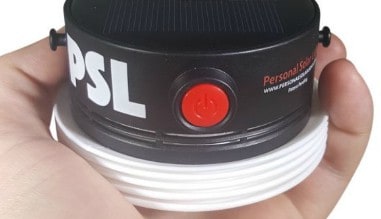
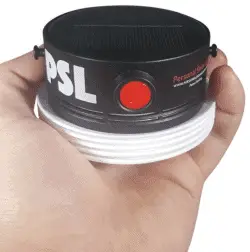 worst is when it is literal. A majority of the human brain is dedicated to the eyes and the hands with the remaining tiny portion covering all the rest of the senses and those functions necessary for life and decoding its challenges. And in case it wasn’t obvious, eyes need light to function. So light must be a key ingredient in all aspects of your survival kit and survival plan. And everyday life for that matter.
worst is when it is literal. A majority of the human brain is dedicated to the eyes and the hands with the remaining tiny portion covering all the rest of the senses and those functions necessary for life and decoding its challenges. And in case it wasn’t obvious, eyes need light to function. So light must be a key ingredient in all aspects of your survival kit and survival plan. And everyday life for that matter.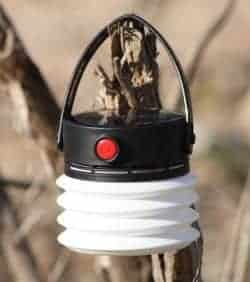
 Lights
Lights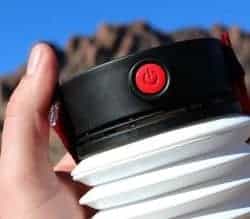
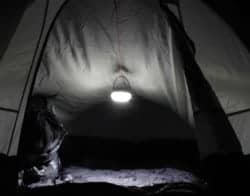 small circular pin connector rather than the industry-standard microUSB connector. So again like the iPhone, you will need the specific charging cable if you want to pump electrons into your
small circular pin connector rather than the industry-standard microUSB connector. So again like the iPhone, you will need the specific charging cable if you want to pump electrons into your  provides a very clean, white light both over a 360 degree area and a short throw spot option firing out unobstructed from the bottom of the light.
provides a very clean, white light both over a 360 degree area and a short throw spot option firing out unobstructed from the bottom of the light.